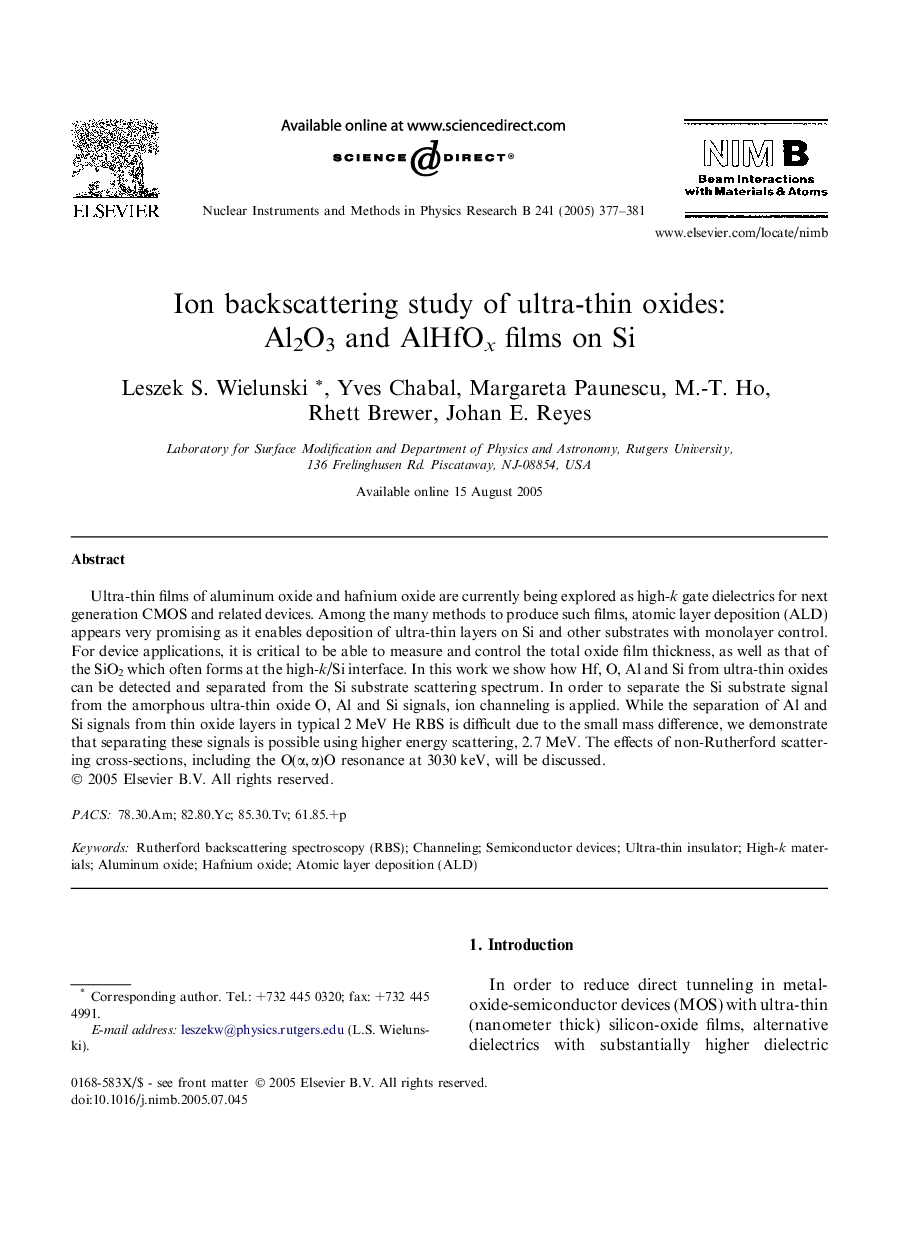| Article ID | Journal | Published Year | Pages | File Type |
|---|---|---|---|---|
| 9817468 | Nuclear Instruments and Methods in Physics Research Section B: Beam Interactions with Materials and Atoms | 2005 | 5 Pages |
Abstract
Ultra-thin films of aluminum oxide and hafnium oxide are currently being explored as high-k gate dielectrics for next generation CMOS and related devices. Among the many methods to produce such films, atomic layer deposition (ALD) appears very promising as it enables deposition of ultra-thin layers on Si and other substrates with monolayer control. For device applications, it is critical to be able to measure and control the total oxide film thickness, as well as that of the SiO2 which often forms at the high-k/Si interface. In this work we show how Hf, O, Al and Si from ultra-thin oxides can be detected and separated from the Si substrate scattering spectrum. In order to separate the Si substrate signal from the amorphous ultra-thin oxide O, Al and Si signals, ion channeling is applied. While the separation of Al and Si signals from thin oxide layers in typical 2 MeV He RBS is difficult due to the small mass difference, we demonstrate that separating these signals is possible using higher energy scattering, 2.7 MeV. The effects of non-Rutherford scattering cross-sections, including the O(α, α)O resonance at 3030 keV, will be discussed.
Keywords
Related Topics
Physical Sciences and Engineering
Materials Science
Surfaces, Coatings and Films
Authors
Leszek S. Wielunski, Yves Chabal, Margareta Paunescu, M.-T. Ho, Rhett Brewer, Johan E. Reyes,
